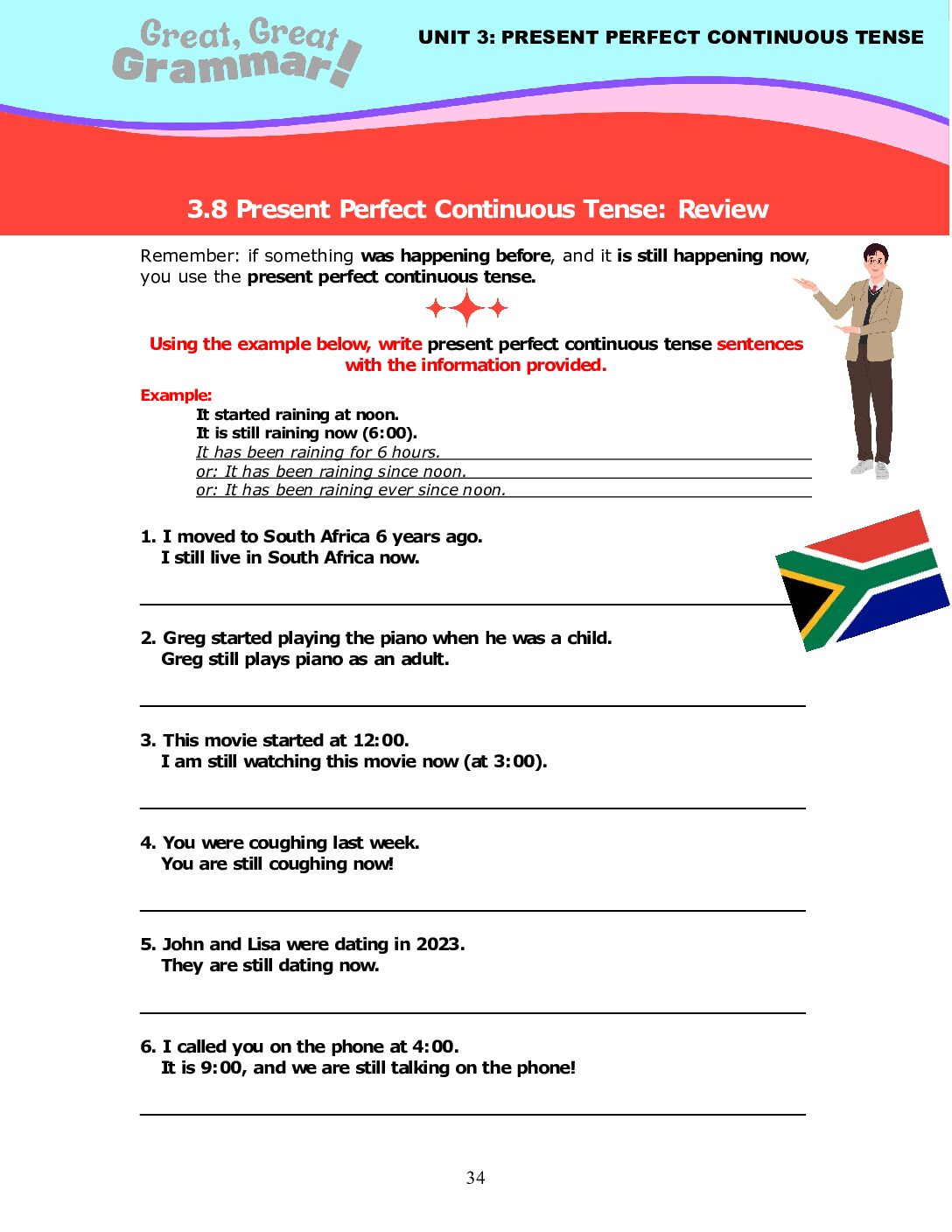In this ESL grammar lesson, students use the present perfect continuous tense to describe various scenarios.
ESL Grammar: What is the Present Perfect Continuous Tense?
The Present Perfect Continuous Tense, also known as the Present Perfect Progressive Tense, combines aspects of the present perfect and present continuous tenses. It emphasizes the duration of an action that started in the past and is still ongoing or has just finished.
Structure:
- Affirmative: Subject + has/have been + present participle (verb+ing)
- Example: She has been studying for three hours.
- Negative: Subject + has/have not been + present participle (verb+ing)
- Example: They have not been working on the project lately.
- Question: Has/Have + subject + been + present participle (verb+ing)?
- Example: Have you been waiting long?
ESL Grammar: When to Use the Present Perfect Continuous Tense
- Duration of an Ongoing Action: Use this tense to highlight how long an action has been happening up to the present moment.
- Example: I have been reading this book for a week.
- Recent Actions with Present Results: Emphasize that an action has just finished and its effects are still noticeable.
- Example: She is tired because she has been running.
- Repeated Actions: Describe actions that have been happening repeatedly over a period.
- Example: We have been meeting every Friday for the past year.
The English grammar lesson below reviews the present perfect continuous tense in a clear and simple manner that is easy for ESL learners to understand. Our series of ESL grammar lessons on subjects and verbs introduce these concepts and reinforce them through helpful and instructive exercises.
This lesson is available for free download, and you can download many more English grammar lessons focusing on advanced aspects of English grammar (past continuous tense, present perfect tense, present perfect continuous tense, passive voice, embedded questions, relative clauses) in our comprehensive, intermediate- to advanced-level ESL grammar textbook Great, Great Grammar! (Book 3: Tenses and More!).

